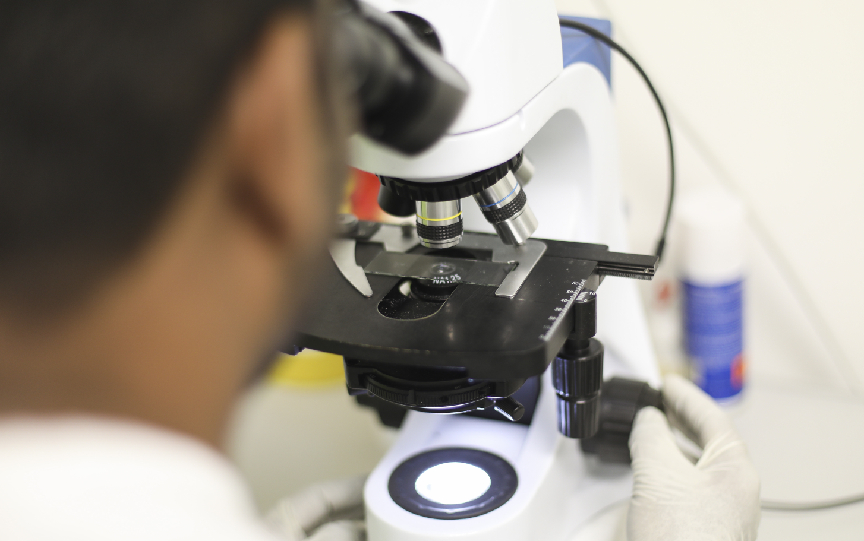Re-innervation of human skin by rat dorsal root ganglia permits to study interactions between sensory nerve fibres and native human dermal mast cells ex vivo.
Chéret J. et al., Exp. Dermatol., 2021
Despite several practical benefits, human skin organ cultures typically suffer from denervation—a loss of nerve supply. It hinders dermatological studies tracking a sensory route, e.g., studies of neurogenic skin inflammation, itch or skin irritation. Our recent research confirms that human skin can be re-innervated with rat dorsal root ganglia, a cluster of sensory neuronal cells. We show that, upon re-innervation, human skin mast cells become significantly more viable than in non-innervated control skin and that mast cell becomes very strongly with the new nerve fibres. This preliminary study opens the door for assay development to scrutinize the crucial communication of mast cells and keratinocytes within nerves, namely under conditions of skin inflammation and itch.
Pro-inflammatory Vδ1 + T-cells infiltrates are present in and around the hair bulbs of non-lesional and lesional alopecia areata hair follicles.
Uchida et al., J. Dermatol. Sci., 2020
In the most common inflammatory human hair loss disorder—alopecia areata (AA)—T-cells self-attack and damage hair follicles. A specific population of T-cells—the gamma-delta-T-cells (γδT-cells) remains unexplored in this context. When we investigated these Vδ1-T cell receptor-expressing lymphocytes (Vδ1+T-cells) we discovered that they likely play a more important role in AA pathobiology than had b been appreciated hitherto. Quantitative immuno-histomorphometry revealed that lesional hair follicles in scalp biopsies from AA patients show much a higher number of activated, interferon-gamma-secreting Vδ1+T-cells, some of which even invade the hair follicle. Even non-lesional hair follicles of AA patients already show an increase in the number of these lymphocytes. Our observation strongly suggests that they deserve to become a novel target in future AA care.
Clues that mitochondria are involved in the hair cycle clock: MPZL3 regulates entry into and progression of murine hair follicle cycling.
Nicu et al., Exp. Dermatol., 2020
Mitochondria—mainly known as the energy-producing powerhouses of cells—get another feather on the hat: a previously unknown role in hair growth control, namely in the elusive hair cycle clock (HCC) that drives our hair follicles through their life-long cycle of growth, regression, and rest. Intending to identify key HCC players, we unraveled that one little-known mitochondrial protein, MPZL3, may sit at the center of this as yet poorly understood molecular machiner: Mice that have been engineered to be devoid of MPZL3 show normal hair follicle morphogenesis but a delayed entry into the hair cycle. Thereupon, however, the HF cycle speeds up and features an untimely early telogen-anagen transition—hinting that MPZL3 serves as a key molecular brake on hair growth induction. If this function is confirmed by further work on translated to the human hair follicle, antagonizing the mitochondrial protein and/or the genes it regulates downstream could become a powerful new strategy for treating various hair loss disorders.
A novel nondrug SFRP1 antagonist inhibits catagen development in human hair follicles ex vivo.
Bertolini et al., BJD, 2020
Wnt signaling, one of the elementary molecular pathways that control hair follicle development and growth, is also essential for maintaining human hair growth (anagen). We have revealed previously that a key Wnt antagonist, secreted frizzled-related protein 1 (SFRP1), shuts down anagen in human hair follicles and that drugs that antagonize SFRP1 can prolong anagen and thus human hair growth (Hawkshaw et al. PLoS Biol 2018). In a new study with organ-cultured human scalp hair follicles, we now show that this can also be achieved with non-drugs, namely with the cosmeceutically applicable SFRP1 antagonist, C1. It prolongs anagen and stimulates human hair matrix keratinocyte proliferation. This documents for the first time that powerful hair growth-modulatory effects can be exerted in human scalp hair follicles even by non-drugs – if the right key molecules and signaling pathways are selectively targeted.


